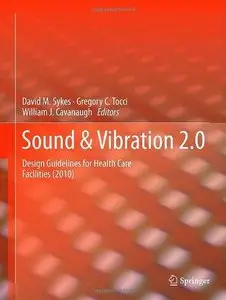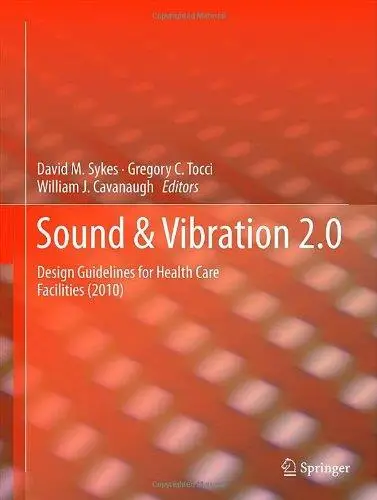Sound & Vibration 2.0: Design Guidelines for Health Care Facilities By David Sykes, Gregory C. Tocci, William J. Cavanaugh
2013 | 85 Pages | ISBN: 1461449863 | PDF | 4 MB
2013 | 85 Pages | ISBN: 1461449863 | PDF | 4 MB
This document was commissioned by the Facility Guidelines Institute as the sole reference for acoustics in health care facilities. It was written by the Health Care Acoustics Working Group, a permanent committee of the Acoustics Research Council (ARC), comprised of members of leading professional societies in acoustics, noise control engineering, acoustical consulting and related professions. ARC organized the health care Working Group in 2004-5 drawing its members from ten constituencies that range from medicine to law, public policy, architecture, design and engineering in order to provide constructive, guidance on sound and vibration based on research and best practices. Sound and Vibration 2.0 has been adopted as the sole reference standard for acoustics in health care facilities by: the 2010 FGI/ASHE "Guidelines for the Design and Construction of Healthcare Facilities" (used in 60 countries); the US Green Building Council’s "LEED for Healthcare" (used in 87 countries); The Green Guide for Health Care V2.2; and the International Code Council's IGCC (2011). Sound and vibration are topics of increasing prominence in the design, construction, and operation of healthcare facilities. A satisfactory acoustical environment in a healthcare facility is now viewed as an essential component of effective healthcare. Sensible acoustical and privacy planning in the early design stages of a healthcare facility project can be solved effectively and affordably with a few strokes of the designer's pencil. The recommended minimum design requirements presented in this work are therefore intended to aid designers in achieving satisfactory acoustical and privacy environments in healthcare facilities. This handbook includes comprehensive, practical, and measureable guidelines for all aspects of acoustics in the design, construction, and evaluation of all types of healthcare facilities, including large general hospitals, specialized patient care facilities, and ambulatory patient care facilities.



